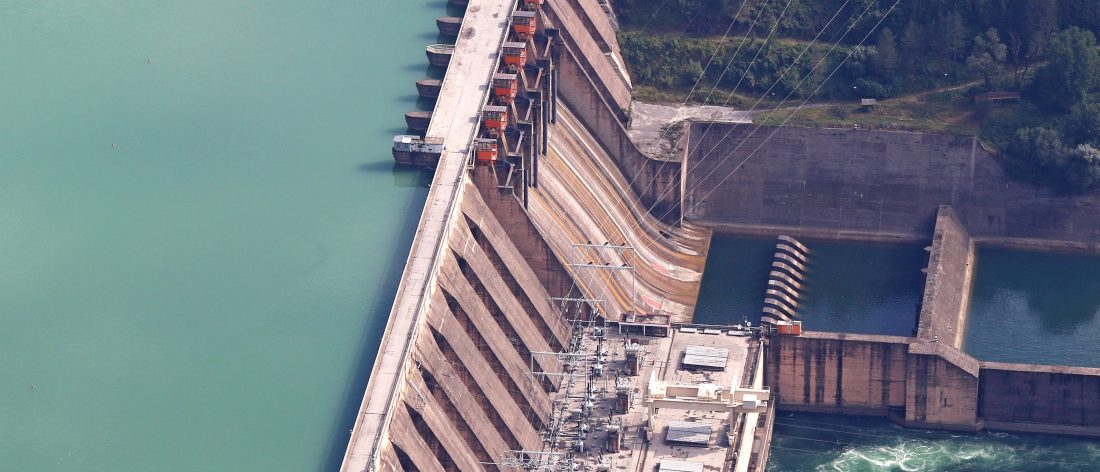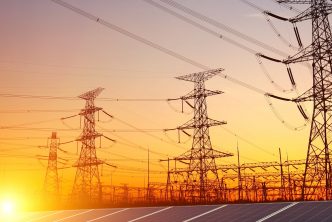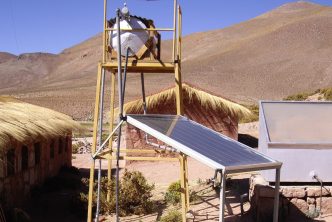Exploring the Potentials for Small Hydro Power in Nigeria
Osasu Eghobamien
The world is going clean at almost the same pace at which crude oil dominated the world in the mid-19th century. The last few decades have seen a tremendous increase in clean energy use to provide grid and off-grid electricity. By the beginning of 2020, 32.6 percent of the world’s energy came from renewable sources, compared to 29.6 in 2000[1]. This significant increase shows the conscious efforts the world is making to reduce global warming and its attendant adverse effects.
The case is not entirely different in Nigeria. However, adopting clean energy solutions in Nigeria stems from an urgent need to provide electricity to the 80 million mostly rural dwellers. Therefore, identifying and deploying decentralised solutions for such regions is gaining ground, focusing on using available clean energy sources.
The Abandoned Puzzle Piece
Nigeria has an abundance of natural, clean energy sources, notably solar and hydro. Recent trends focus on harnessing solar power for off-grid electrification in rural, peri-urban, and urban areas. In less than a decade, the Rural Electrification Agency has overseen the installation of over 99,450 off-grid connections[2]. This figure does not account for all the mini-grid and solar home system installations done by private individuals.
Figure 1. Hydropower constitutes only one percent of total energy consumption in Nigeria
Source: US Energy Information Administration[3]
While making progress in solar, the Off-Grid Industry seems to have dropped the ball on developing small hydropower (SHP) plants for electrification, despite the potential to bridge the electricity gap through embedded generation and decentralised supply. Nigeria ranks ninth in hydropower potential in Africa[4], with a combined capacity to generate over 2,000 megawatts (MW) of electricity across the country. SHP is also feasible to generate sufficient power for heavy loads, which would be more feasible for industrial and manufacturing clusters countrywide.
Small Hydro Perception
Conventional hydropower arrangement is large-scale, encompassing thousands of acres and producing hundreds of megawatts of electricity from a single plant. These large-scale projects are usually associated with prohibitive costs, long project development time, and significant environmental and social complexities. These conditions are not always the case with SHP. SHP projects usually provide capacities of 0.1 to 10 MW[5] of electricity. They may not require a dam, or they can leverage already existing ones. The reduced requirements reduce the costs and complexities of planning, development, construction, and environmental impact; hence, they are relatively cheap. SHP’s are further classified based on their capacities:
Table 1: Classifications of Hydropower Plants[6]
| Category | Installed Capacity |
| Pico | 0–5kW |
| Micro | 5–100 kW |
| Mini | 100–1MW |
| Small | 1–10 MW |
| Medium | 10–100 MW |
| Large | 100 MW |
The power output of SHP for any location depends on the head[7] (slanted elevation), flowrate measured across the year, geological features of the location, including topography, suitable and available turbines, and civil engineering work. Furthermore, the water used to generate power is available for other uses, especially in agricultural and industrial areas for irrigation and processing. The available energy capacity from SHP is predictable, unlike intermittent sources such as wind and solar. Therefore, it can serve to produce baseload power. Furthermore, SHP technology is long-lasting and requires only little maintenance. Systems can last for 50 years or more without the need for significant changes.
On the flip side, SHP projects are mainly site-specific; hence, developers cannot replicate data and design from one site in other sites. SHP projects are data-intensive, given that it takes at least one to two years to gather reliable data to determine output. Due to the volume of water and fixed head per site, maximum power is usually limited for a site, making expansion difficult. However, developers can expand through cascading plants. Seasonal changes also affect water levels, which affect the power generation of plants. Seasonal changes also affect water levels, which affect power generation.[8]
Nigeria’s Potentials
In Nigeria, the major rivers and their tributaries, including Niger, Benue, Kano, and Cross River, provide the hydropower potential. These major rivers branch into smaller ones, many of which are around hills and mountains with high slopes, predominantly in Bauchi, Jos, and Taraba states. Nigeria has over 278 of such small rivers[9] with a total capacity of 734 MW identified as SHP potential sites for further exploration. The National Electricity Supply Company (NESCO) has developed some SHP schemes amounting to 19MW around Jos Plateau.[10] UNIDO has also developed a 400kW plant in Kankara Tea Community, Sardauna LGA, and Taraba State, which became operational in 2014.[11]
Potentials-in-Waiting: The Darkness Continues
The potential for small Hydropower (SHP) in Nigeria is grossly underexploited. There are 17 already existing hydro dams recognised by the Federal Government. These facilities have dams constructed and can cumulatively provide an estimated 19MW of electricity to the surrounding communities. If developed, the hydropower plants can operate based on the embedded generation model, where they are connected directly to the nearest distribution network.
Apart from these 17 existing small hydro projects, the federal government owns three already existing small hydropower projects: Goronyo Dam, Ikare Gorge Dam, and Oyan Dam. The government abandoned the 6MW power plant construction in Ikare Gorge Dam, Iseyin, Oyo State in 1982.[12] [13]A recent 2020 documentary shows that the two turbines and generators, and other components, are still in crates and deteriorating. The Oyan River Dam 9MW power plant was completed by 1986 but was not grid-connected.
These power plants were intended to serve the surrounding rural communities, but these are still without electricity today. Such negligence amounts to wasted years of data collection and survey for these sites, favourable heads, flowrates, and other surrounding topographical conditions. These towns are far behind in terms of development and exposure owing to the lack of electricity.
Picking Up the Dropped Balls
It would be antithetical to ignore the potentials Nigeria has to harness SHP for power generation. Both completed or otherwise; previous attempts show that the country has barely scratched the surface in reaping the benefits of SHP for the local economy. The first signs of seriousness in exploring SHP in Nigeria would be the Goronyo, Ikare, and Oyan Dam power plants’ revitalisation and operation. There are potentials to refurbish in these areas and include medium to low voltage grids over defined areas. Therefore, the Federal Government should consider involving private sector participants in the financing, development, and operations of these plants as embedded or completely off-grid systems. The favourable terrain and already existing infrastructure indicate possible high-profit potentials from these projects.
Apart from previous attempts, the Rural Electronification Agency, Federal Ministry of Power, and Federal Ministry of Environment should return to earlier identified potential sites and make them available for public-private partnerships for development and operations. Moreover, there is a need to consider exploring further potential sites considering available innovations in SHP. Organisations including UNIDO, UNESCO, and the World Bank have already set the precedence for such explorations; therefore, stakeholders can apply the lessons learned to further attempts. A few of these lessons include the need to create awareness, build capacity and prioritise productivity.
Awareness Creates Possibilities
Associations like the Renewable Energy Association of Nigeria (REAN), Association of Mini-Grid Developers (AMDA) Nigeria, and the Council for Renewable Energy Nigeria should actively advocate for more research and exploration of SHP potential across the country. Such an approach diversifies the attention of only solar power and creates room for more vocations to relate within the industry. These organisations can also liaise with FMWR, FME, and other relevant government agencies to revitalise interest in SHP.
Build Capacity
Further to exploiting the country’s small hydropower development, there is an urgent need to establish a centre that will offer technical training for interested stakeholders and investors seeking to venture into SHP development in various feasible localities. Such capacity-building efforts will focus on initial site studies (including geological investigation and water flow characteristics), feasibility studies, development planning, construction, operations and maintenance, and monitoring & evaluation of projects.
Adequate capacity building will positively impact partnerships and bankable project development, which will attract funding to boost industrial growth in the benefitting regions. Capacity-building should also involve proper knowledge management, including creating knowledge repositories, ensuring continuity in learning, and creating a sustainable cycle.
Attach Projects to Productive Centres for Agriculture, Commerce, and industry
A practical approach to SHP projects’ deployment is to target current and potential commercial and industrial clusters. Such an approach improves the economic viability of undertaking hydropower projects. Besides collecting reliable data on environmental characteristics, such an approach would require proper economic feasibility studies of regions to identify areas with potential for industries and businesses. Research would involve identifying target beneficiaries alongside their needs; it would also be possible to get multiple uses out of the facilities. For instance, in an agricultural community, the SHP plant can provide electricity for processing while simultaneously channelling water for irrigation and processing. In factories, such projects can provide both electricity and water for factory processes.
Innovations: Highway to Even More Potential
Technological advancements in SHP turbines increase the potential to explore more sites while reducing successful projects’ barriers. The innovations provide systems that allow direct relations with nature without destroying the local ecosystems. Moreover, lower maintenance efforts are required compared to the conventional SHP systems, and costs are comparable to other renewable technologies. These innovations also overcome the seasonal intermittency of production, a common barrier to exploring SHP systems. Therefore, SHP systems achieve more efficient power generation regardless of the seasons. Such innovations exist and work in countries like India, Germany, the USA, and South Africa. These can apply to potential sites in Nigeria.
A recent SHP innovation is the low-head, turbulent turbine.[14] While a standard hydropower project requires a minimum head to generate the necessary force to produce power, the turbulent turbine innovation can work for heads that are less than 5 meters. This type of turbine expands the array of flowing water bodies and potential sites for exploration. It can generate up to 200kW per turbine, reaching multiple megawatts as a decentralised group. They also work at a capacity factor of at least 95 percent[15], making them more efficient than solar systems at 20 percent. Given the Levelised Cost of Energy of 0.04 US$/kWh, they are cost-competitive with other renewable energy technologies. The turbines also present minimal environmental impact and can be used in both rural and urban settings.
Another notable innovation is the hydrokinetic turbine. The hydrokinetic turbine only depends on the flow of water to operate, unlike conventional hydropower systems that depend on potential energy through dams, weirs, and other civil structures. This feature gives the turbine both cost and environmental benefits, as there is no need to build separate infrastructures apart from an anchor point.[16] The small capacity (5kW) turbine also serves as a photovoltaic in a hybrid system, ensuring a stable year-round power supply. Its year-round production ability reduces technology costs below solar photovoltaic (PV) and diesel generators.
Conclusion
SHP is a potential tool for Nigeria in her pursuit to attain mass electrification. In this respect, Nigeria must double down on its efforts to harness SHP in rural communities. The intrinsic economic and social benefits of SHP make it significant in Nigeria’s future electricity mix.
While Nigeria has barely scratched the surface in terms of its electricity goals, it stands a chance of getting closer while improving its local economies if it explores its SHP potentials. Innovations to ensure reduced cost already exist around the world; the off-grid industry needs to harness those. Additionally, environmental risks are negligible for pico- and micro-scale hydropower projects and can be mitigated with mini and small-scale ones. There is much work to do in exploring further potentials. Efforts by stakeholders at creating awareness and building capacity can cause SHP to outpace other renewable technologies.







